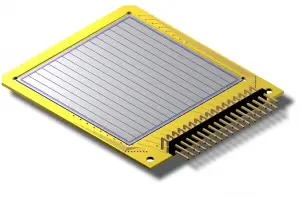
Silicon-based semiconductor detectors are mainly used for charged particle detectors (especially for tracking charged particles) and soft X-ray detectors, while germanium is widely used for gamma-ray spectroscopy. A large, clean, and almost perfect semiconductor is ideal as a counter to radioactivity. However, it isn’t easy to make large crystals with sufficient purity. The semiconductor detectors have low efficiency, but they give a very precise measure of energy. Detectors based on silicon have sufficiently low noise even at room temperature. This is caused by the large band gap of silicon (Egap= 1.12 eV), which allows us to operate the detector at room temperature, but cooling is preferred to reduce noise.
Advantages and Disadvantages of Silicon Detectors
Advantages of Silicon Detectors
- Compared with gaseous ionization detectors, the density of a semiconductor detector is very high, and charged particles of high energy can give off their energy in a semiconductor of relatively small dimensions.
- Silicon has a high density of 2.329 g/cm3, and the average energy loss per unit of length allows for building thin detectors (e.g., 300 µm) that still produce measurable signals. For example, in the case of a minimum ionizing particle (MIP), the energy loss is 390 eV/µm. The silicon detectors are mechanically rigid, so no special supporting structures are needed.
- Silicon-based detectors are very good for tracking charged particles, and they constitute a substantial part of the detection system at the LHC in CERN.
- Silicon detectors can be used in strong magnetic fields.
Disadvantages of Silicon Detectors
- Price. The disadvantage is that silicon detectors are much more expensive than cloud or wire chambers.
- Degradation. They also suffer degradation over time from radiation. However, this can be greatly reduced thanks to the Lazarus effect.
- High FWHM. In gamma spectroscopy, germanium is preferred due to its atomic number being much higher than silicon, increasing the probability of gamma-ray interaction. Moreover, germanium has lower average energy necessary to create an electron-hole pair, which is 3.6 eV for silicon and 2.9 eV for germanium. This also provides the latter with a better resolution in energy.